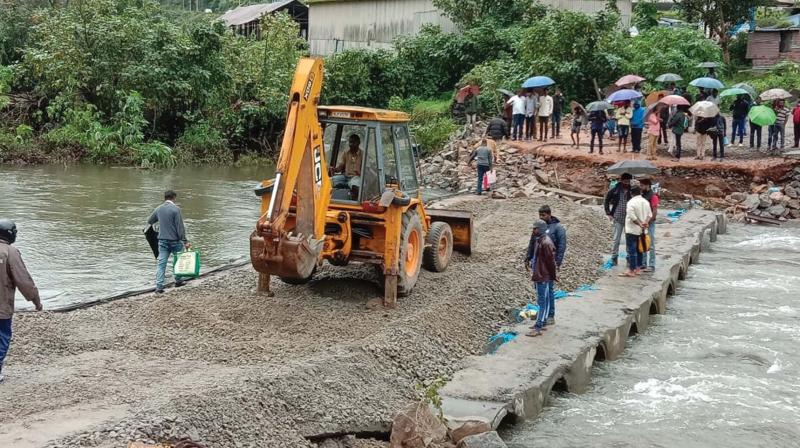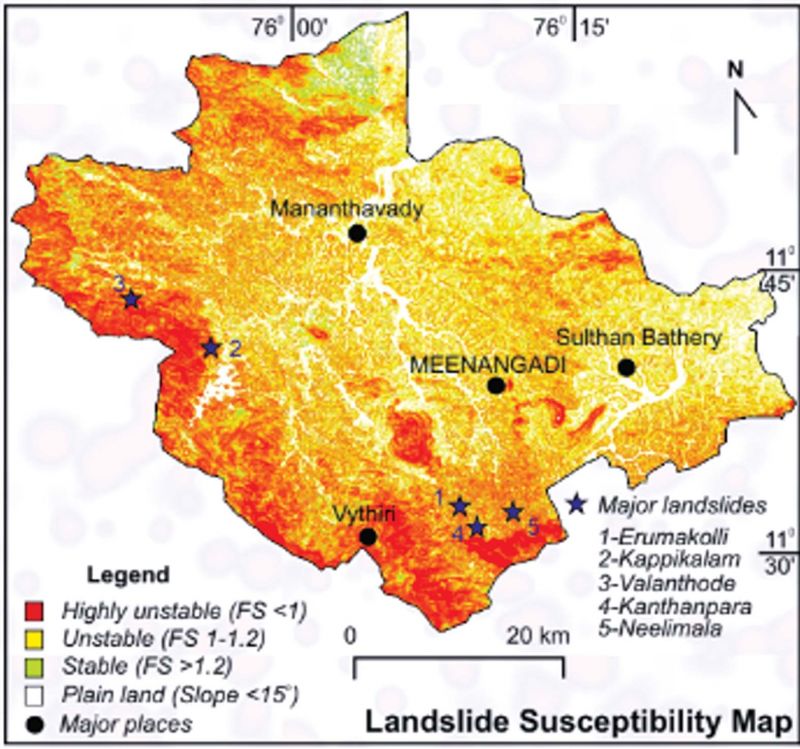Landslides decoded

Q) What are the major findings that your team has made after studying the flood and landslip-hit regions in the state?
The major findings of our landslide study were published as the Landslide Atlas of Kerala authored by Sajinkumar K.S., assistant professor, University of Kerala and me. The findings indicate that Idukki and Wayanad are the two districts most susceptible to landslides in Kerala. Wayanad has highly dissected hilly tracts of Western Ghats. The thick column of soil in Wayanad has high clay content, which leads to low permeability, that causes a rapid increase in pore-pressure during rain events and causes debris flows. Improving the monitoring of spatial variability of rain will be critical to providing warnings to communities during extreme rain events.
 Wayanad landslide hazard map
Wayanad landslide hazard map
More than the natural causes, human intervention has been cited as the major reasons for landslips in the state. Do you agree with this suggestion?
When I visited the landslide sites last year, I found that many of the landslides were associated with construction activities or at sites, where construction was completed in the last few years. So, the construction in these landslide-prone terrains further increases the vulnerability. I don’t think the solution is to stop construction fully but to do construction in a responsible manner taking the terrain conditions into account and ensuring that there is a minimal increase in infiltration due to the new development in the area. Also, there would be some sensitive zones where we will have to stop the construction fully. So in summary, improved zonation and regulation will be critical to control landslides.
If human intervention is the primary cause for the landslip disasters what are the possible measures for mitigation of these calamities?
As I mentioned above, making minimal changes to the natural terrain and reducing the infiltration of water to the ground is essential for development in the highly vulnerable areas. If there is increased infiltration due to development, measures have to be taken to drain that water from the subsurface. That way, we don’t let the pore-pressure to increase to dangerous levels. These principles should be taken into consideration for infrastructure projects in the area.
A section of the people including certain scientists, feel that the unusual rains witnessed in the state in 2018 and 2019 are the primary reasons for the landslips. Do you agree with that suggestion?
Absolutely! Without rain and water, there is very little danger for landslides in Kerala. But the fact is if you modify the terrain and let that rainwater to infiltrate the ground that would increase the chance of landslides. So infiltration of water into the ground is the major trigger for landslides. We cannot control the rain, but we can control the infiltration of rain into the ground after the rainfall. We can control either by reducing infiltration or by increasing subsurface drainage. So we do have the power to reduce such events and keep communities safe. We need to act on these engineering principles.
A lot of talks are in the state about the impact of climate change as the primary reasons for the changes in the rainfall pattern and the consequent calamities. What is your opinion?
We see an increase in extreme weather. We need to factor these extreme events in our planning, zonation, and development activities. If we don’t do that, we may end up paying a more significant price in the future.

